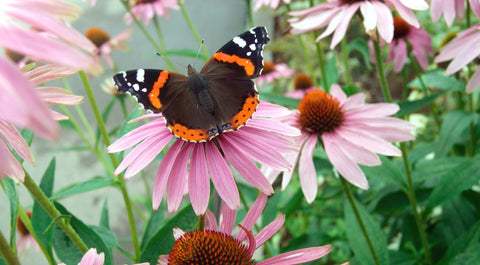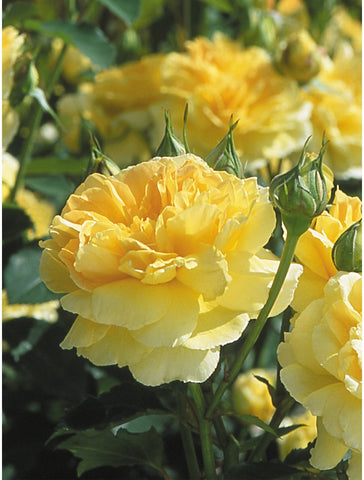It's not too late to plant, even in late summer. In August, you can still grow short-season vegetables, herbs and flowers from seeds or transplants in the garden beds. The following content also has some reference value for raised garden beds.
By August, gardeners are busy harvesting, weeding, watering, and planting food and ornamentals that are early in the season. But even in late summer, there's still time to plant delicious, nutritious short-season crops and decorate beds and borders with cool-season flowers. Once you know what to plant in August, you can have a rich garden even if temperatures start to drop - certain plants can overwinter in some parts of the country.
How do I know what to plant in August
If you wait until August to start planting, some plants will disappoint you. For example, vegetables like corn take a long time to ripen, and if planted too late in the growing season, the plant will die when frost hits. The same is true of ornamental plants such as sunflowers; Depending on the variety, it can take 80 to 120 days for them to go from seed to flower, dying when the temperature drops. In general, USDA Garden areas 9 through 11 are exceptions. Mild winters allow gardeners to grow many vegetables, herbs and flowers almost all year round.

To find out what crops to plant in August, look up the average first frost date in your area or consult an agent at your local extension services office. If you are planting, read the seed package to see how long it takes each plant to mature and make sure there is enough time to flower before this date.
If you don't have enough time to grow from seed, you can grow some vegetables, flowers, and herbs by transplanting. If your first frost date is approaching and the plants you want to grow can't stand cold weather, look for varieties labeled "early maturing."
Fortunately, some ornamentals and food plants can tolerate freezing temperatures and temperatures below 28 degrees, so they're a good choice for a late-season garden. These include spinach, broccoli, cabbage, kale, Brussels sprouts, turnips and turnips.
When the temperature is between 28 and 32 degrees, other plants will get a light frost. These are lettuce, beets, beets, peas, parsley, cauliflower and so on. The tops of beets and carrots may die, but the roots can survive.
Some flowers can also tolerate light frost, such as sweet autumn chrysanthemum, carnation, calendula, morning glory, Shirley poppy, sweet pea and goldfish dragon. However, if the weather is still warm or hot in August, some flowers that prefer cooler temperatures will not thrive. Other animals that can tolerate light frosts will also freeze to death.
What to plant in garden bed in August
For mixing containers, make sure your plants need the same amount of sunlight and water. Use large containers to grow large single plants.
If you're still picking vegetables, herbs, and flowers in August, your garden space may be tight. Unless your plant is finished and ready to pull, try growing it in a container. Potted plants are especially good for growing fast growing radishes, salad vegetables like lettuce and spinach, and herbs like arugula.
What to plant in August: Vegetables
Similarly, make sure the vegetables you plant in August ripen before the average date of your first frost. Not all areas can grow all the vegetables, herbs and flowers listed below in August. Corn, for example, takes 60 to 100 days to mature depending on the variety you plant, so only gardeners in the Southwest can plant in August and harvest their crops before the frost.

If you don't have time to plant in August, you can use transplanting. Transplantation can reduce the time it takes for plants to mature. Another option: grow plants that can tolerate frost and cold weather. The cold encourages vegetables such as kale to convert starch into sugar, which makes them sweeter to eat after a frost. These are great choices for late summer gardens.
Beans (rod and bush)
beet
Cauliflower (transplant)
Brussels sprouts (transplant)
Cabbage (transplant)
cauliflower
cabbage
kale
cucumber
kale
Leek (transplant)
Lettuce (heat and moss tolerant variety)
Leaf mustard
Peas (sugar and crisp)
ROACH
spinach
Pumpkin
Swiss chard
Tomatoes (transplanting); The temperature must be below 90 degrees or the fruit will not set.
ROACH
What to plant in August: Vanilla
arugula
ocimum
chives
coriander
anethum
Lemon balm oil
Lemongrass (from grafts)
Oregano leaf (from graft)
Parsley
Rosemary (transplant)
Thyme (from the graft)

What to plant in August: Flowers
Unless otherwise noted, these are perennials. As with growing vegetables and herbs, start with transplanting, not sowing, if you hope to have frost before those flowers bloom.
Sweet snowball
Aster
The iris with the beard
Anthracus (year; Hardy in zone 10-11)
Chrysanthemums (hardy or garden chrysanthemums) are perennial plants; Florist chrysanthemums are hardy in zones 7 to 9)
daylily
hydrangea
Marigold (annual hardy; Die of frost)
Pansy (short-growing perennial; Usually annual plants because they don't like heat.
Penny (gentle)









